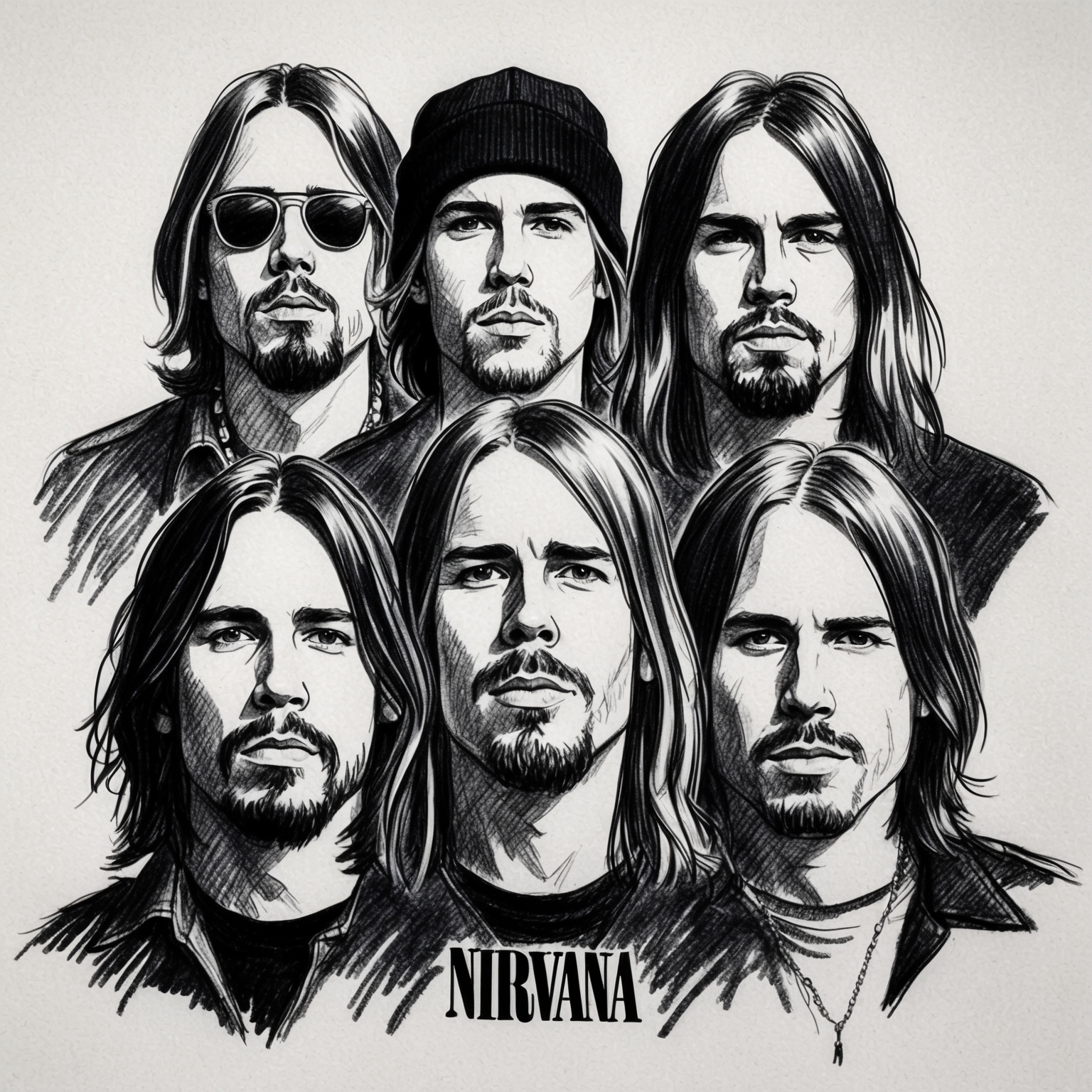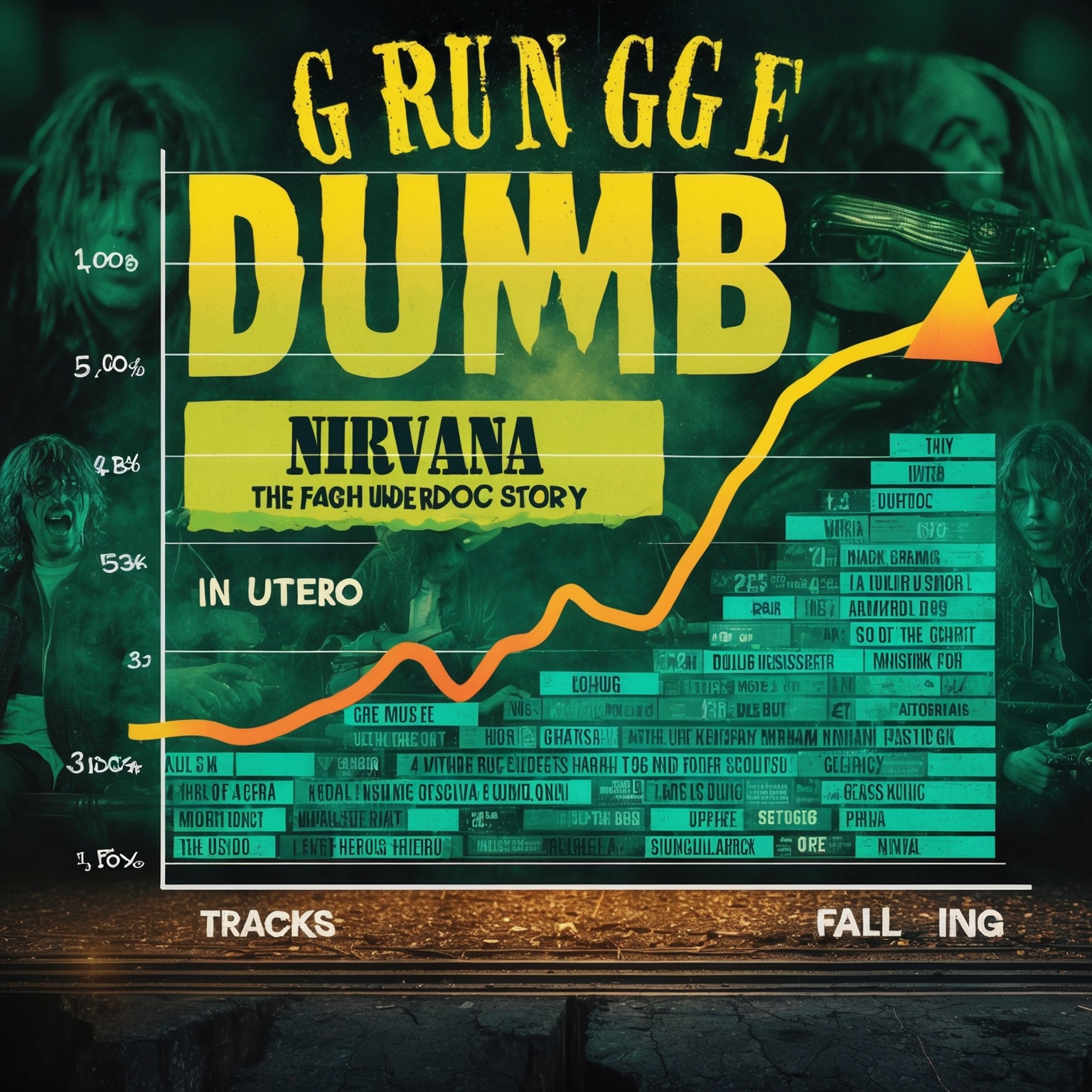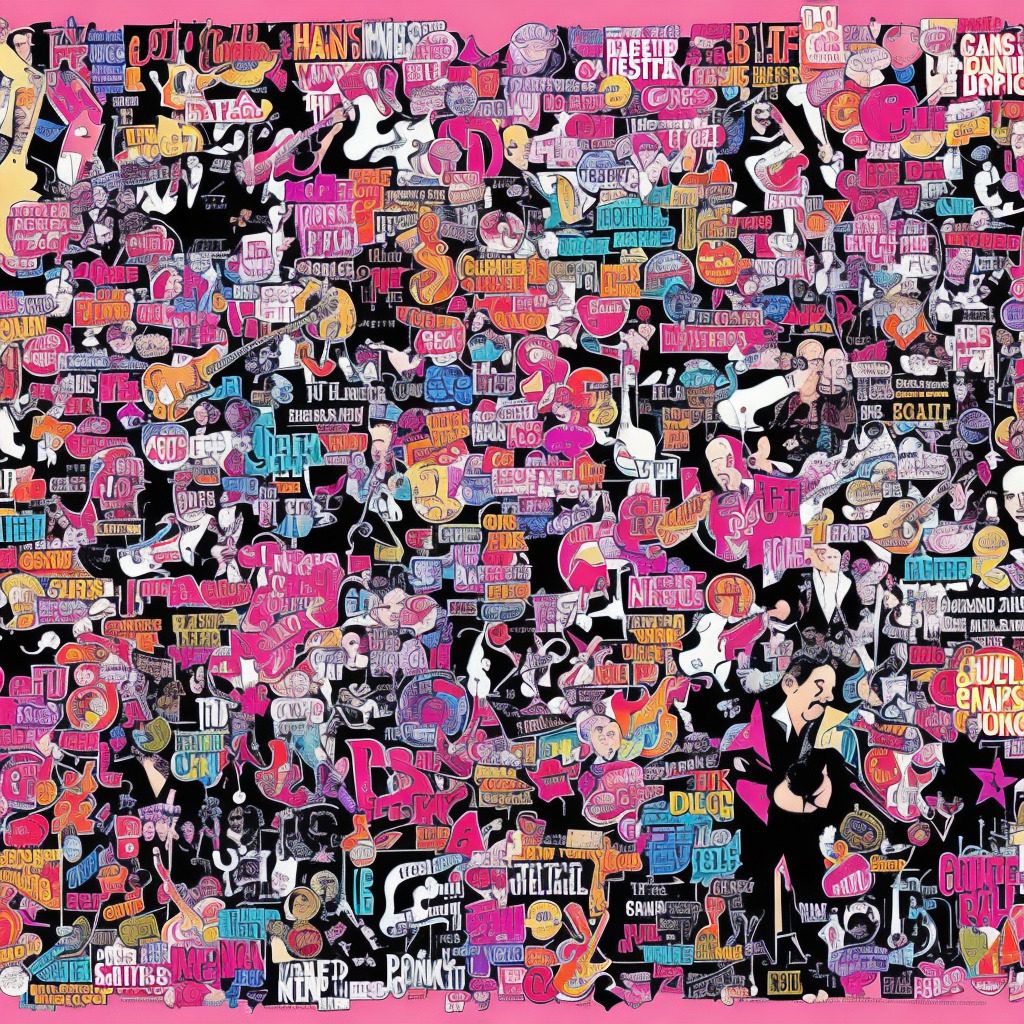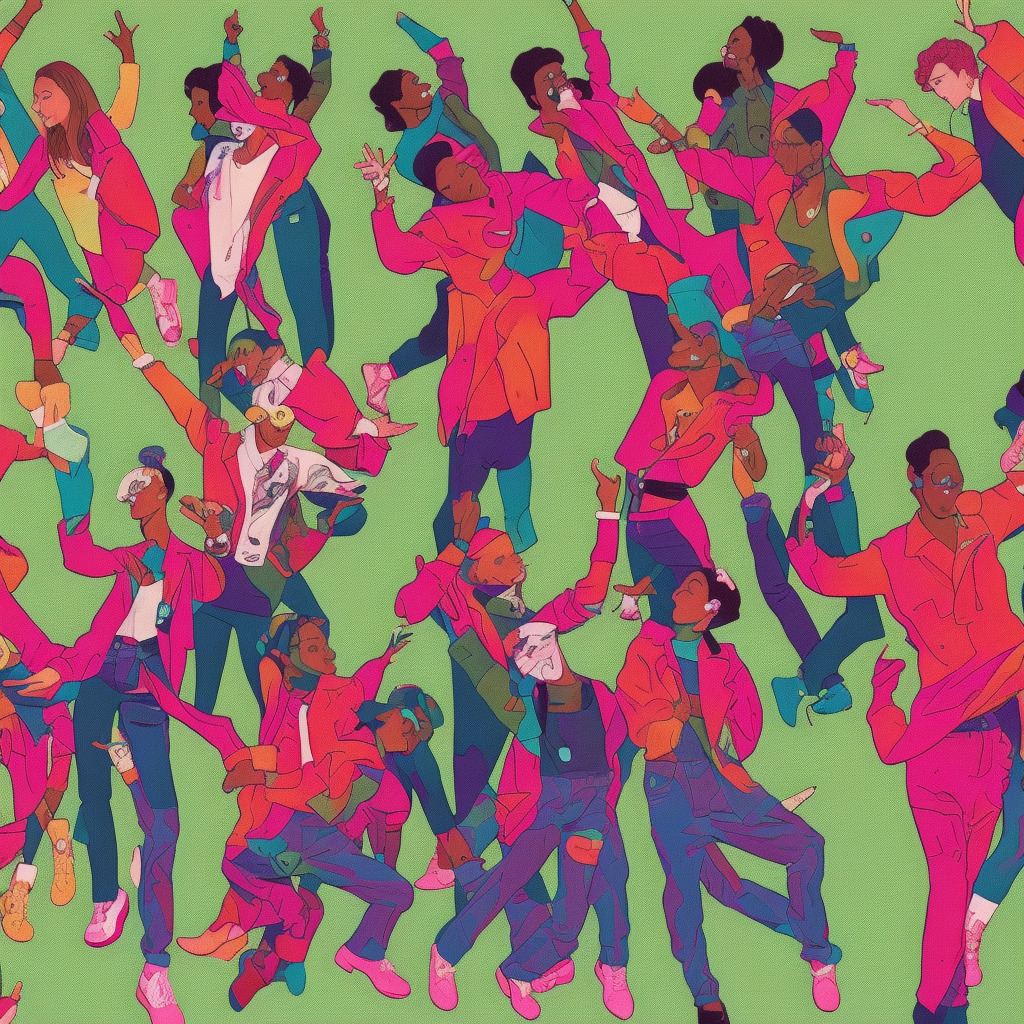Nirvana: The Icons Behind ‘Dumb’
Explore the impact of Nirvana on rock music and how ‘Dumb’ reflects their influence, with insights into the band’s formation, members, and the cultural era surrounding its release.

Nirvana, the seminal band that marked an indelible impression on the face of rock music, is the driving force behind the introspective song, “Dumb.” Formed in 1987 in Aberdeen, Washington, Nirvana quickly carved out a niche with their raw, unfiltered sound that blended punk rock energy with melodic hooks. At the heart of the band was the enigmatic frontman, Kurt Cobain, whose songwriting prowess and distinctive voice became the very essence of the grunge movement. With the release of “Dumb,” Nirvana offered a poignant reflection on feelings of inadequacy and self-worth, underscoring the band’s capacity to channel universal emotions through their music.
Nirvana’s journey to stardom was both rapid and tumultuous, driven largely by the charisma and creativity of its members. Alongside Cobain, bassist Krist Novoselic and drummer Dave Grohl formed a powerful trio. Their music, which often juxtaposed moments of serenity with explosive choruses, defined an era and reshaped the rock landscape. During the early 1990s, Nirvana was at the forefront of a movement that challenged conventional norms, both musically and culturally. Cobain, in particular, became an unexpected icon for a generation disillusioned with societal expectations, and “Dumb” encapsulated this skepticism and yearning for authenticity in a way that resonated deeply with listeners.
The release of “Dumb” in 1993, featured on their critically acclaimed album “In Utero,” came at a time when the band was grappling with the pressures of fame. The early 90s music scene was awash with change, with grunge serving as its rebel anthem. Nirvana’s role in this transformative period cannot be overstated. Despite their explosive success, or perhaps because of it, the band continued to experiment and evolve, as seen in the composition and lyrical depth of “Dumb.” This song, like much of their work, was a collaborative effort where the synergy between Cobain’s introspective lyrics, Novoselic’s anchoring basslines, and Grohl’s dynamic drumming shone through, reflecting their unique bond and creative process.
Kurt Cobain: The Visionary Behind Nirvana’s Sound
Kurt Cobain, the visionary behind “Dumb,” brought raw emotion and innovation to Nirvana’s sound, leaving an indelible impact on music history.

Background and Career: Kurt Cobain, the mastermind behind Nirvana, was more than just a talented musician; he was a cultural icon. Born in Aberdeen, Washington, in 1967, Cobain’s passion for music ignited at an early age. With limited formal training, he taught himself to play the guitar and began performing in local bands. By the late 1980s, Cobain had formed Nirvana with Krist Novoselic, blending punk rock with raw, emotional lyrics that became the hallmark of the grunge movement. His rise to fame was meteoric, yet his career, like his life, was tragically brief.
Musical Style and Influences: Cobain’s musical style was a fusion of varied influences ranging from punk to classic rock. Inspired by bands like Black Sabbath and The Pixies, Cobain’s writing embraced both the aggression of punk and the melodic tendencies of pop, crafting a unique sound that resonated with a disenchanted generation. His music often conveyed a sense of authenticity and vulnerability, a reflection of his own struggles with fame and inner demons. Cobain’s songwriting was not only musically innovative but also lyrically profound, often exploring themes of alienation and heartache.
Role in the Song’s Creation: As the primary composer of “Dumb,” Cobain’s vision was central to its creation. The song, known for its simplicity and melancholic undertone, encapsulates his ability to weave intricate emotions into his music. Cobain’s composition contributed significantly to the song’s intimate feel, employing cello arrangements to add depth and texture. His distinctive touch is evident in the interplay between lyrics and melody, portraying a sense of introspection that is both relatable and haunting.
Recognitions that Define ‘Dumb’ and Its Lasting Influence
Explore how ‘Dumb’ by Nirvana, though not densely awarded, influences through covers and cultural appearances, reaffirming its lasting impact.

Dumb by Nirvana, though not showered with awards directly, has garnered significant acclaim over the years. Its hauntingly introspective lyrics and minimalist musical structure have made it a critical darling among fans and musicians alike. While ‘Dumb’ might not have a trophy cabinet to rival some of Nirvana’s other hits, its impact resonates far beyond what awards can encapsulate. This track from the iconic album ‘In Utero’ has consistently been praised for its raw simplicity and emotional depth, gaining it a loyal following and establishing its place in alternative rock history.
Cover versions of ‘Dumb’ have added layers to its reputation. Notable artists like Tori Amos have offered their own renditions, bringing unique dimensions to the song while preserving its essence. These covers have not only introduced ‘Dumb’ to newer audiences but have also reaffirmed the song’s versatility and timelessness.
Beyond the music charts, ‘Dumb’ has found its way into various cultural mediums, further cementing its legacy. It has featured in several films and TV series, subtly augmenting the emotional landscape of whichever scene it graces. This frequent presence in visual media exemplifies how ‘Dumb’ transcends its original context, continually connecting with listeners in unexpected ways.
Chart Journey of Nirvana’s ‘Dumb’
Explore the unique chart journey of Nirvana’s ‘Dumb,’ a track that transcends conventional commercial success to become a fan favorite.

Nirvana’s ‘Dumb,’ a melancholic yet introspective track from their seminal album ‘In Utero,’ did not initially experience standout chart success when it was released. Unlike the band’s larger hits like ‘Smells Like Teen Spirit’ and ‘Come as You Are,’ ‘Dumb’ did not climb high on mainstream charts upon release during the early 1990s. However, the song has earned its place in the hearts of fans, reflective of its indie and alternative audience’s appreciation rather than significant commercial chart success.
Though ‘Dumb’ was not a singles-driven success story, its presence in the album ‘In Utero,’ which peaked at number one on the Billboard 200, underscores Nirvana’s enduring influence at the time. The song fits into Nirvana’s discography as a reflective piece, cementing its critical acclaim more so than its commercial reception. Over the years, ‘Dumb’ has surfaced in various community and fan-driven lists, celebrating Nirvana’s more personal and poignant works, and its timeless relevance continues in streams and playlist inclusions.
‘Dumb’ showcases Nirvana’s ability to produce resonant tracks that strike a chord without resorting to extensive marketing strategies. Its commercial journey is a testament to the organic and unplanned nature of certain hits, highlighting Nirvana’s trajectory further into their gritty, raw identity. Even without a music video or an explosive marketing campaign, ‘Dumb’ managed to carve its niche, proving that not all impactful songs are built on peak chart positions.
Exploring the Visuals: “Dumb” by Nirvana
Although “Dumb” by Nirvana lacks an official music video, its presence is felt through powerful live performances and a multitude of fan-created videos that continue to captivate audiences.

Unpacking the Lack of Official Music Video
Interestingly, Nirvana’s “Dumb” does not have an official music video, which is a common thread for many of the tracks on their acclaimed album, “In Utero.” Despite this, the song’s raw emotional appeal and universal themes have inspired a plethora of fan-created videos. These fan interpretations vary from intimate acoustic performances to elaborate creative visuals that attempt to capture the song’s essence. The absence of an official video leaves room for personal interpretations, making the impact of “Dumb” timeless and individualized for each listener.
The Role of Live Performances
Even without an official music video, Nirvana’s live performances of “Dumb” have become an integral part of its legacy. Notable is the band’s unforgettable MTV Unplugged performance, where Kurt Cobain’s emotive expressions brought the song’s poignant lyrics to the forefront. The stripped-down acoustic setting allowed for a raw and authentic rendition that resonated deeply with audiences. Live versions have consistently captured the raw, vulnerable energy that makes “Dumb” a standout in Nirvana’s discography.
Fan Tributes and Critical Acclaim
Over the years, numerous fan tributes have surfaced online, expanding the song’s reach to newer generations. These tributes are more than just homages; they reflect the cultural and emotional impact of “Dumb.” Critics have often remarked on how these interpretations encapsulate the essence of Nirvana’s music – bridging the gap between the band’s 90s grunge roots and today’s music landscape. The continued interest and creative interpretations in multimedia formats showcase the song’s profound and persistent influence.
A Deep Dive into the Musical Architecture of ‘Dumb’
This section delves into the intricate musical structure of Nirvana’s ‘Dumb’, examining its key, tempo, and chord patterns while highlighting the contributions of each instrument. The song showcases a softer side of the band’s musical evolution, marked by unique acoustic and cello arrangements.

Musical Structure: Key, Chords, and Tempo
The song ‘Dumb’ by Nirvana is written in the key of D Major, a key that often conveys a sense of optimism but is intriguingly juxtaposed with the song’s introspective and melancholic lyrics. The chord structure is relatively simple, featuring chords D, G, and B minor, which Nirvana often used to great effect, creating a blend of accessibility and depth in their music. The tempo of ‘Dumb’ is moderate, allowing the lyrics to breathe and the melody to resonate with the listener.
Melody, Harmony, and Rhythm
The melody of ‘Dumb’ is straightforward, which underscores Kurt Cobain’s ability to craft memorable tunes that linger in the listener’s mind. Harmonically, the song relies on Cobain’s signature vocal delivery, layered with harmonies that convey a haunting, almost ethereal quality. The rhythm section provides a steady yet engaging backdrop, with Dave Grohl’s drumming and Krist Novoselic’s bass playing serving to complement the sparse but effective guitar work.
Instrumental Contribution and Unique Sound
In ‘Dumb’, Cobain’s acoustic guitar plays a pivotal role in creating the song’s distinctive sound, contrasting Nirvana’s typically more electric, grunge-heavy feel. The cello, played by Kera Schaley, adds a rich, melancholic texture, further highlighting the song’s introspective nature. This combination of acoustic guitar and cello offers a unique sonic palette that stands out in Nirvana’s discography.
Nirvana’s Evolution and Artistic Context
In the context of Nirvana’s discography, ‘Dumb’ stands as a testament to the band’s willingness to explore new musical landscapes. Compared to earlier hits like ‘Smells Like Teen Spirit’ or ‘Lithium’, ‘Dumb’ offers a softer, more subdued aesthetic, indicative of the creative direction seen in their album ‘In Utero’. This shift in tone and style illustrates Nirvana’s artistic evolution, showcasing their versatility and growth as musicians.
Recording Anecdotes and Production Insights
The recording of ‘Dumb’ took place at Pachyderm Studio in Minnesota, known for its exceptional acoustics and tranquil setting, which likely influenced the song’s laid-back nature. Steve Albini, the producer, brought a raw sound to the track, capturing the band’s authentic essence with minimal studio interference. An interesting fact about the recording is the spontaneity and ease with which Cobain completed his vocal takes, capturing the raw emotion and sincerity that permeate the track.
Exploring the Depths of ‘Dumb’: A Deep Dive into the Lyrics
The lyrics of “Dumb” by Nirvana offer a rich exploration of themes like alienation, identity, and fleeting happiness. With its personal narrative and powerful literary devices, Kurt Cobain crafts a song that resonates with universal emotions while reflecting on the cultural climate of the early 1990s. The emotional depth and relatability of the lyrics continue to engage fans, prompting varied interpretations and discussions.
The sun is gone, but I have a light
The day is done, but I’m having fun
I think I’m dumb
Or maybe just happy
Think I’m just happy
Think I’m just happy
Think I’m just happy
My heart is broke, but I have some glue
Help me inhale and mend it with you
We’ll float around and hang out on clouds
Then we’ll come down
And have a hangover
…
******* This Lyrics is NOT for Commercial use *******
 Lyrical Themes and Messages: At first glance, the lyrics of “Dumb” by Nirvana might appear simple, yet they encapsulate complex themes of existentialism and self-reflection. Kurt Cobain’s words delve into feelings of alienation and internal strife while simultaneously offering glimpses of an elusive happiness. In the opening lines, the juxtaposition of feeling ‘dumb’ and ‘happy’ suggests a profound inner conflict that resonates with listeners who have experienced similar emotions. The personal nature of these themes is a testament to Cobain’s ability to articulate the human experience in a relatable manner. Narrative and Storytelling: The song unfolds in a first-person narrative, providing an intimate glimpse into the mind of the protagonist. This narrative choice allows the audience to connect more deeply with the lyrics, as the feelings of pretending and grappling with one’s identity are laid bare. The lines “I’m not like them, but I can pretend” and “The sun is gone, but I have a light” evoke a sense of resilience in the face of adversity. This storytelling approach reinforces the song’s impact, making it feel like a shared experience rather than a solitary confession. Use of Literary Devices: Cobain’s lyrics in “Dumb” are rich with literary devices that enhance the song’s emotional depth. Metaphors such as “My heart is broke, but I have some glue” illustrate the shattered yet hopeful state of the narrator, while alliteration and the repetition of phrases like “Think I’m just happy” infuse the song with a rhythmic quality that lingers with the listener. These elements work together to create a powerful lyrical tapestry that captures the highs and lows of the human condition. Cultural and Social References: The song emerged during a time when grunge culture was at its peak, and its lyrics reflect the disillusionment often associated with the era. Cobain’s introspective writing mirrors the broader social angst of the early 1990s, resonating with a generation grappling with issues of identity and purpose. The cultural references embedded within the lyrics serve to anchor the song in its historical context while maintaining its timeless appeal. Emotional Impact and Relatability: The emotional resonance of “Dumb” is undeniable. Its lyrics speak to the universal experience of feeling out of place and searching for moments of genuine happiness. The contrast between despair and fleeting joy evokes a range of emotions, appealing to listeners who find solace in knowing they are not alone in their struggles. Cobain’s raw honesty and vulnerability contribute significantly to the song’s lasting impact. Fan Theories and Interpretations: Over the years, fans have offered varied interpretations of “Dumb,” reflecting the song’s multifaceted nature. Some perceive it as Cobain’s commentary on the pressures of fame, while others view it as a broader reflection on societal expectations. Regardless of the interpretation, the song’s ability to inspire discussion and personal reflection is a testament to its enduring significance.
Lyrical Themes and Messages: At first glance, the lyrics of “Dumb” by Nirvana might appear simple, yet they encapsulate complex themes of existentialism and self-reflection. Kurt Cobain’s words delve into feelings of alienation and internal strife while simultaneously offering glimpses of an elusive happiness. In the opening lines, the juxtaposition of feeling ‘dumb’ and ‘happy’ suggests a profound inner conflict that resonates with listeners who have experienced similar emotions. The personal nature of these themes is a testament to Cobain’s ability to articulate the human experience in a relatable manner. Narrative and Storytelling: The song unfolds in a first-person narrative, providing an intimate glimpse into the mind of the protagonist. This narrative choice allows the audience to connect more deeply with the lyrics, as the feelings of pretending and grappling with one’s identity are laid bare. The lines “I’m not like them, but I can pretend” and “The sun is gone, but I have a light” evoke a sense of resilience in the face of adversity. This storytelling approach reinforces the song’s impact, making it feel like a shared experience rather than a solitary confession. Use of Literary Devices: Cobain’s lyrics in “Dumb” are rich with literary devices that enhance the song’s emotional depth. Metaphors such as “My heart is broke, but I have some glue” illustrate the shattered yet hopeful state of the narrator, while alliteration and the repetition of phrases like “Think I’m just happy” infuse the song with a rhythmic quality that lingers with the listener. These elements work together to create a powerful lyrical tapestry that captures the highs and lows of the human condition. Cultural and Social References: The song emerged during a time when grunge culture was at its peak, and its lyrics reflect the disillusionment often associated with the era. Cobain’s introspective writing mirrors the broader social angst of the early 1990s, resonating with a generation grappling with issues of identity and purpose. The cultural references embedded within the lyrics serve to anchor the song in its historical context while maintaining its timeless appeal. Emotional Impact and Relatability: The emotional resonance of “Dumb” is undeniable. Its lyrics speak to the universal experience of feeling out of place and searching for moments of genuine happiness. The contrast between despair and fleeting joy evokes a range of emotions, appealing to listeners who find solace in knowing they are not alone in their struggles. Cobain’s raw honesty and vulnerability contribute significantly to the song’s lasting impact. Fan Theories and Interpretations: Over the years, fans have offered varied interpretations of “Dumb,” reflecting the song’s multifaceted nature. Some perceive it as Cobain’s commentary on the pressures of fame, while others view it as a broader reflection on societal expectations. Regardless of the interpretation, the song’s ability to inspire discussion and personal reflection is a testament to its enduring significance.
? Did you know? Nirvana’s Dumb doesn’t have an official music video, leaving room for fans’ wild creativity! ?✨ #Nirvana #GrungeGems #MusicTrivia #DumbSong tinyurl.com/ycyntwkw
Click to Tweet







